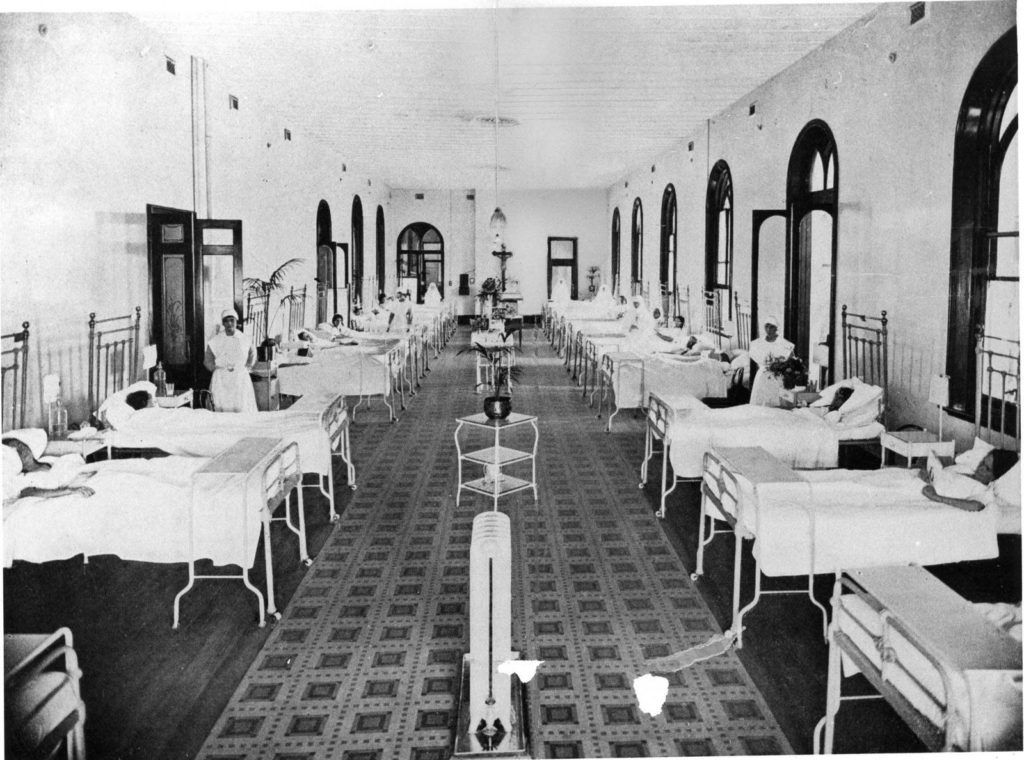Dr. Michael Scott is the second member of the University of Maryland Emergency Medicine/Internal Medicine/Critical Care program to contribute to the website over the last 2 weeks. As acting chief resident, Dr. Scott was asked to present a case of his choice at what was thought to be a routine monthly medical conference. What resulted was the discussion of a case that not only left the MICU staff baffled but also led to the Hematology department cracking open sections of textbooks not accessed in years! Come along and discover a diagnosis that just might change the way you look at your next case of cytopenia……
In my (incredibly brief) experience in the ICU, maybe the most challenging set of patients I’ve found to deal with are the septic patients with no source; they seem to come along about once a month, they come in on loads of pressors despite good filling of the tank!
All the antibiotics in the world don’t bring any improvement. Cultures from every orifice yield no insight to origin of infection, scans of every body part leave you scratching your head. Then the blood counts start dropping, and you know they’re septic, but you CAN’T FIND THE FRIGGING SOURCE!
After my recent case conference, in these situations I now ask myself whether I’m not missing something; specifically, Hemophagocytic Lymphohistiocytosis (HLH).
While I was in the past vaguely aware of a hematologic entity by that name, it was never something I felt to be particularly relevant to the ICU. However, there is a body of opinion that considers the adult, or secondary, form of HLH to be the far end of the hyperimmune spectrum, essentially only separated from sepsis and DIC by a degree of severity.
The pathophysiology generally contains a defect in the granule-mediated cytotoxicity pathway…essentially, a failure of the immune system’s inherent feedback inhibition, causing unchecked immune response, manifesting as a disorder quite similar to fulminant septic shock, just without necessarily having a severe infection as the driving source (the most common triggers are some sort of infection, malignancy or rheumatologic disease).
As mentioned, there is a body of opinion that this disorder should be more thought of in a grouping with septic shock, rather than as a primary hematologic disorder independent of other things; furthermore, there is also significant thought that HLH may be underdiagnosed in the ICU.
A very interesting study by Strauss et al of 107 consecutive MICU patients who died and underwent autopsy showed evidence of hemophagocytosis in 64.5% of bone marrow samples at autopsy; while this finding on pathology is not sufficient to diagnose the HLH syndrome, it does support the possibility that this process could be underlying more of our patients’ disease process than what we are currently finding.
The question then becomes, if we are underdiagnosing this, how do we appropriately diagnose it. The clinical diagnostic criteria involve the following:
- Fever
- Splenomegaly
- Cytopenia of 2+ cell lines
- Either elevated triglycerides or low fibrinogen
- Evidence of hemophagocytosis (on either bone marrow, spleen or lymph node biopsy)
- Serum ferritin > 500 mcg/mL (though generally this level is expected to be much higher in HLH)
- Low or absent NK cell activity (by flow cytometry, IF you have this available)
- Soluble CD25 > 2400 U/mL
A clinical diagnosis requires five of the eight criteria. The astute reader will note that, of the easily available tests, none of the findings would be considered to be significantly out of the ordinary in a septic patient. However, as noted, generally the ferritin level is extremely high in HLH, often exceeding levels of 10,000. This, then, may be a finding that can be used to differentiate HLH from run of the mill sepsis. Indeed, one study in hospitalized pediatric patients found a ferritin level of > 10,000 to be 96% specific for the diagnosis of HLH (Allen, Ped Blood CA 2008)
Of course, if the disease is recognized, we are still left with the question of how to treat it. While there has been significant advancement in treating the primary form of HLH in children with a combination of etoposide, dexamethasone, and cyclosporine. See the algorithm below created by the group of the Texas Children Hospital:
n the apparent absence of really ANY significant literature on the use of this regimen in the secondary form in adults, I don’t know that we’re ready to start empirically immunosuppressing our cytopenic septic patients simply because of abnormally high ferritin levels. On the other hand, the idea that we may one day be able to identify which of our sickest patients in the ICU are at the mercy of a runaway immune system, and give targeted therapy to stop that immune system, is an intriguing one…..
1. Strauss R, Neureiter D, Westenburger B, Wehler M, Kirchner T, Hahn EG (2004) Multifactorial risk analysis of bone marrow histiocytic hyperplasia with hemophagocytosis in critically ill medical patients–a postmortem clinicopathologic analysis. Crit Care Med 32:1316–1321.
2. Allen CE, Yu X, Kozinetz CA, et al. Highly elevated ferritin levels and the diagnosis of hemophagocytic lymphohistiocytosis. Pediatr Blood Cancer. 2008;50:1127–1129.
3. Raschke RA, and Garcia-Orr R. Original Research. Critical Care. Hemophagocytic Lymphohistiocytosis. A Potentially Underrecognized Association With Systemic Inflammatory Response Syndrome, Severe Sepsis, and Septic Shock in Adults. Chest 2011; 140 (4): 933-938.
4. Besset S, Schnell D, Azoulay E. Hemophagocytic lymphohistiocytosis mimicking septic shock. Chest 2012 Mar;141(3):835.
5. Jordan MB, Allen CE, Weitzman S, Filipovich AH, McClain KL: How I treat hemophagocytic lymphohistiocytosis. Blood 2011, 118:4041–4052.




